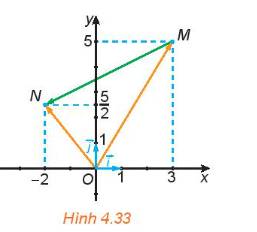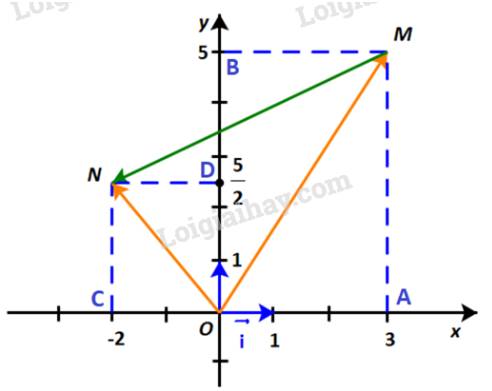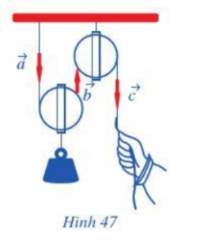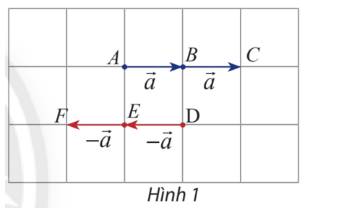a) Trong hình 4.14a, hãy chỉ ra vectơ \(\overrightarrow a + \overrightarrow b \)và vectơ \(\overrightarrow b + \overrightarrow a \).
b) Trong hình 4.14b, hãy chỉ ra vectơ \(\left( {\overrightarrow a + \overrightarrow b } \right) + \overrightarrow c \)và vectơ \(\overrightarrow a + \left( {\overrightarrow b + \overrightarrow c } \right)\).










a) Ta có: \(\overrightarrow {AB} = \overrightarrow a ,\;\overrightarrow {BC} = \overrightarrow b \) nên \(\overrightarrow a + \overrightarrow b = \overrightarrow {AB} + \overrightarrow {BC} = \overrightarrow {AC} \)
Mặt khác: \(\overrightarrow {AD} = \overrightarrow b ,\;\overrightarrow {DC} = \overrightarrow a \) nên \(\overrightarrow b + \overrightarrow a = \overrightarrow {AD} + \overrightarrow {DC} = \overrightarrow {AC} \)
Do đó \(\overrightarrow a + \overrightarrow b = \overrightarrow b + \overrightarrow a \).
b) Theo câu a) ta có \(\overrightarrow a + \overrightarrow b = \overrightarrow {AC} \) và \(\overrightarrow {CD} = \overrightarrow c \) nên \(\left( {\overrightarrow a + \overrightarrow b } \right) + \overrightarrow c = \overrightarrow {AC} + \overrightarrow {CD} = \overrightarrow {AD} \).
Mặt khác: \(\overrightarrow {BC} = \overrightarrow b ,\;\overrightarrow {CD} = \overrightarrow c \) nên \(\overrightarrow b + \overrightarrow c = \overrightarrow {BC} + \overrightarrow {CD} = \overrightarrow {BD} \)
Và \(\overrightarrow a = \overrightarrow {AB} \) nên \(\overrightarrow a + \left( {\overrightarrow b + \overrightarrow c } \right) = \overrightarrow {AB} + \overrightarrow {BD} = \overrightarrow {AD} \)
Vậy \(\left( {\overrightarrow a + \overrightarrow b } \right) + \overrightarrow c = \overrightarrow a + \left( {\overrightarrow b + \overrightarrow c } \right)\)